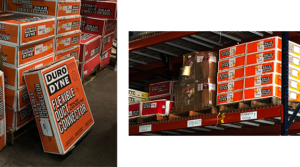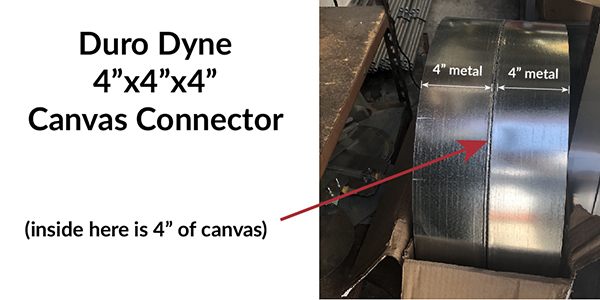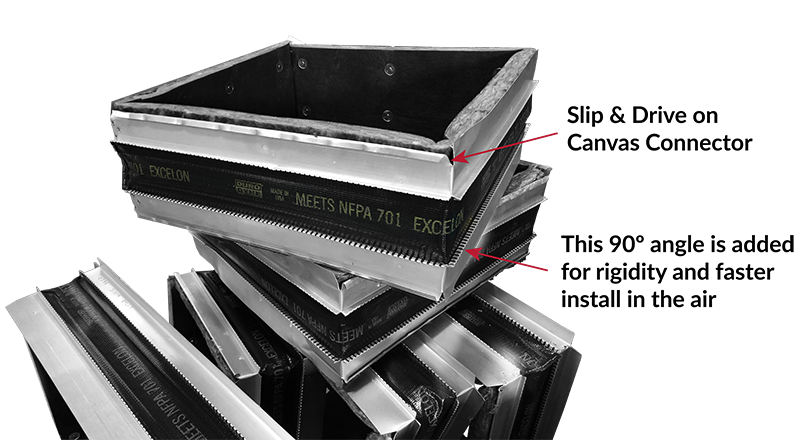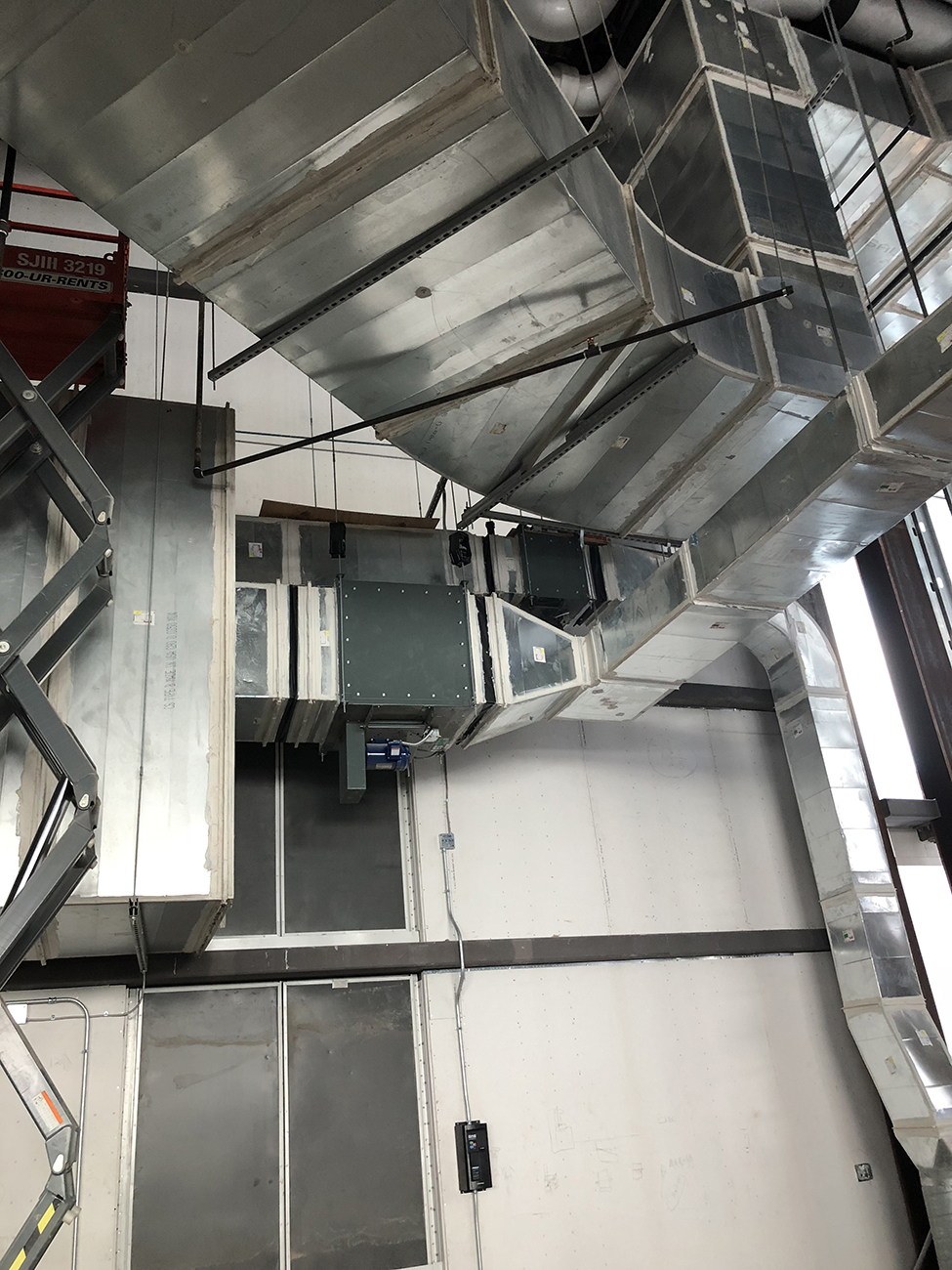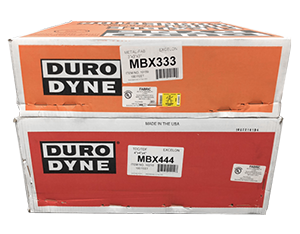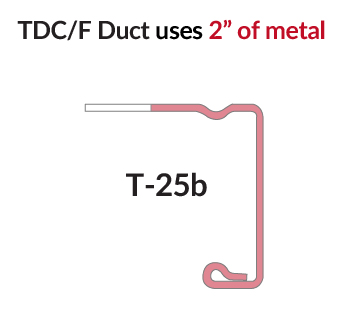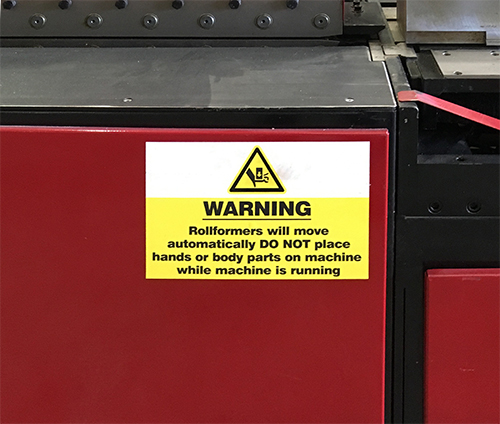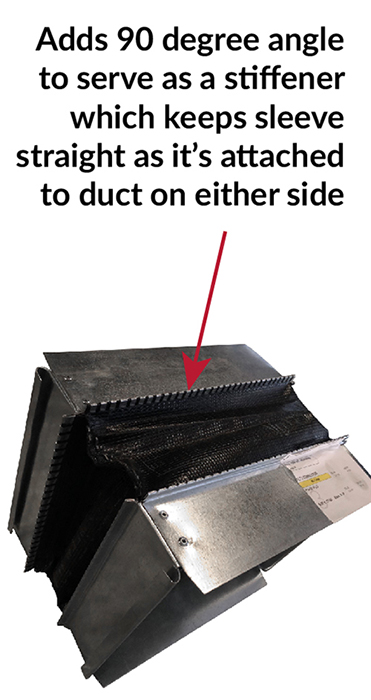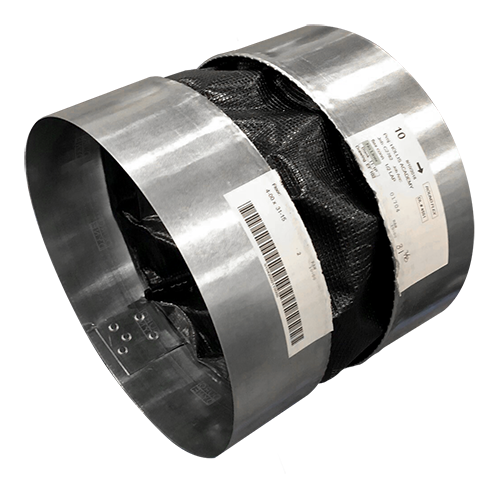Canvas Connector starts as a 100 ft roll packaged in an orange or red box…
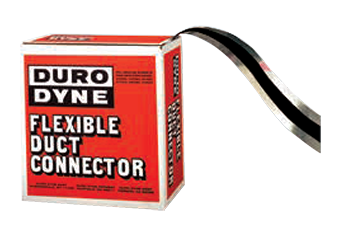

…but once fabricated, ends as a Rectangular Frame Connection in between two joining sections of ductwork.
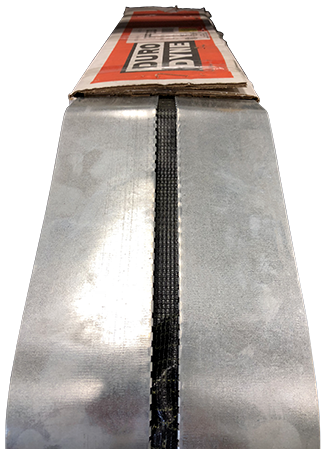
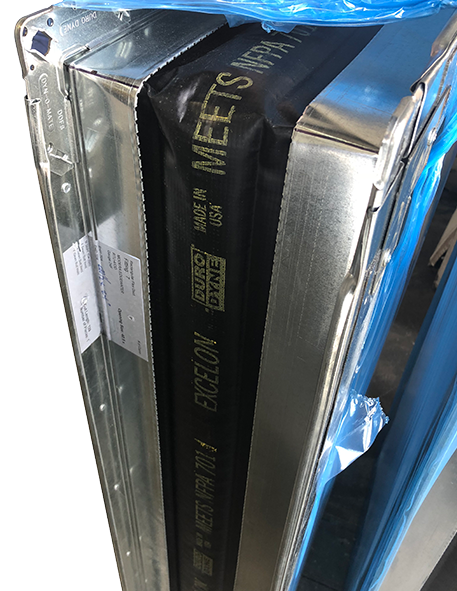
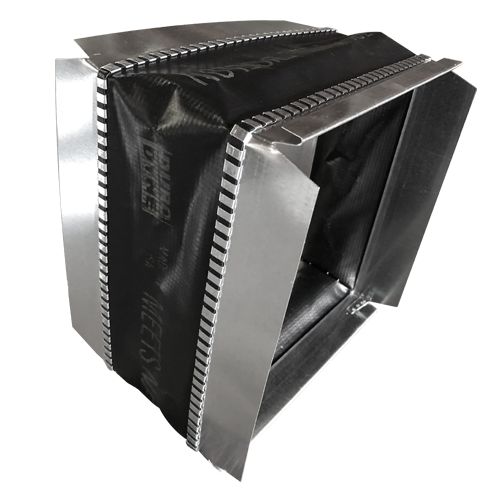
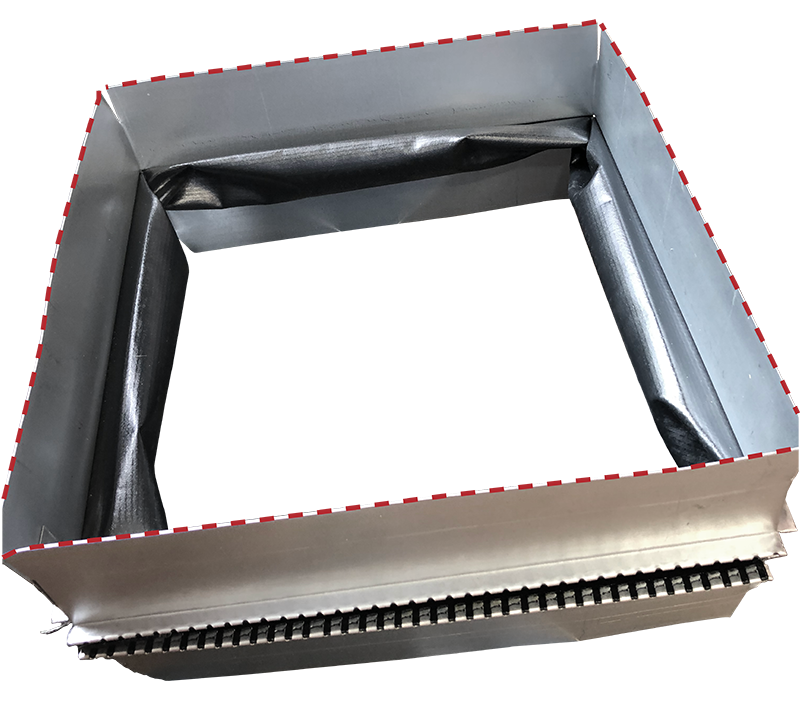
There are four Canvas Connection Frames in this picture…can you identify them?
Why Safety is the primary reason 4” x 4” x 4” Canvas Connector is used for TDC/F Duct instead of 3” x 3” x 3”
The Flexible Duct Connection serves to Isolate the Vibration and Noise coming from the unit so it doesnt carry thru the duct system. It is a stretchable fabric bounded on both sides by two sleeves of metal. The fabricator rolls it out of a box and makes it into a rectangular sleeve which is then installed between two ends of ductwork.
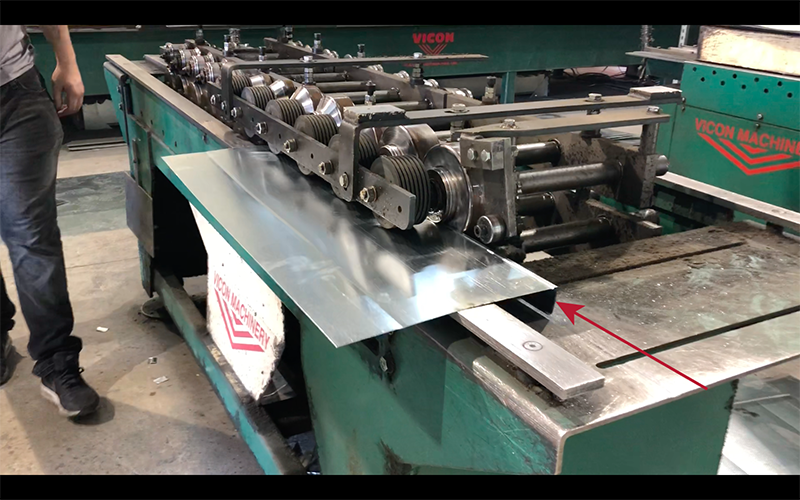
3” x 3”x 3” is the most common size when Duct Fabricators are making this flexible connection from Slip & Drive duct. When this rectangular sleeve (aka flexible duct connection) is being used in TDC/TDF duct, 4″ x 4″x 4″ replaces the 3″ x 3″x 3″ as the size most contractors use.
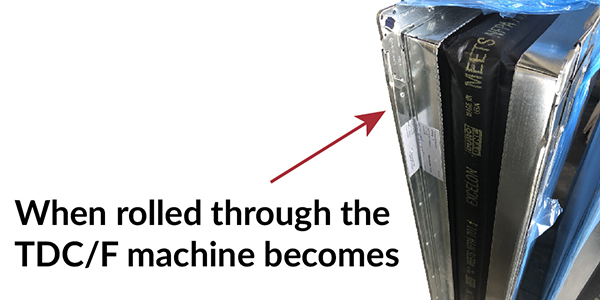
Many contractors assume this is because TDC/TDF duct is accommodating more air pressure and larger ductwork. But feedback from most TDC/TDF shops is one simple reason: Safety. Unlike Slip & Drive duct, the TDC/F profile (whether it’s on the Lockformer TDC, Engel TDF or Vicon TDX) uses 2” of the metal edge from the canvas connector. This means that a 3” x 3” x 3” would end up as 1” x 3” x 1”. Going to 4” x 4” x 4” gives a finished product of 2” x 4” x 2”. Using 3″ x 3″ x 3″ would mean that the fingers are dangerously close (1″) to the forming rolls of the machine.
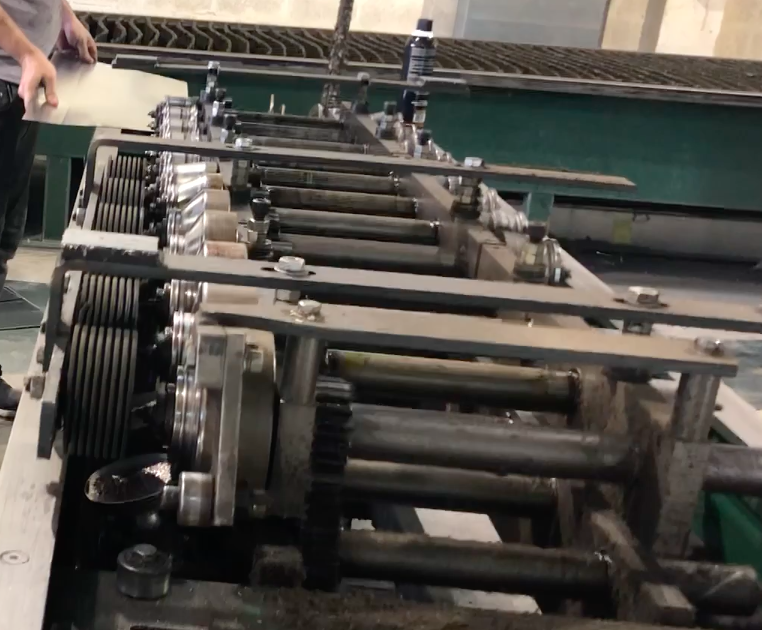
Why turning a 90 degree angle on the Canvas Connector makes sense
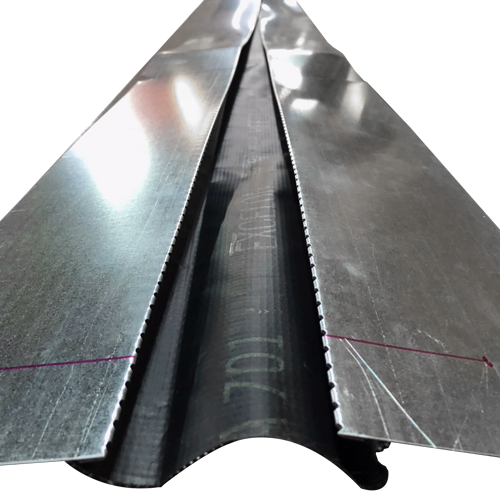
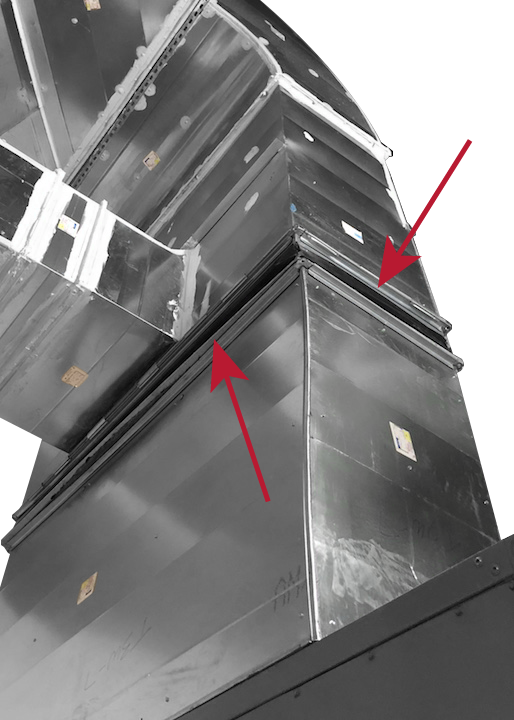
Canvas Connector: not just for Rectangular Duct
Canvas Connector is occasionally used with round duct

